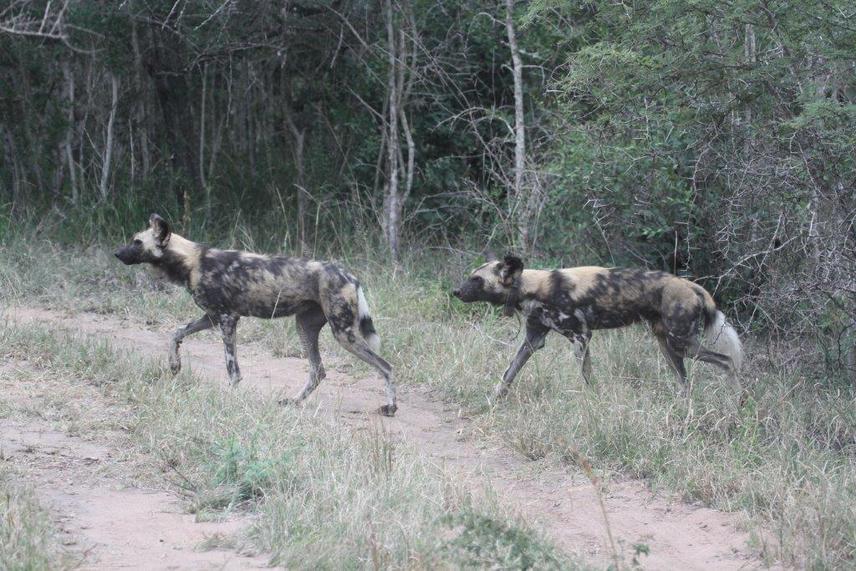David Gary Marneweck
To understand the population-level effects on African wild dogs created by the enclosed fenced reserves in KwaZulu-Natal meta-population with limited space, conspecifics and prey.

Alpha pair, one fitted with SAT collar.
The endangered African wild dog is highly prone to local extinction due to intra-and interspecific factors often driving them towards their minimum viable group size (Courchamp& Macdonald 2001). Additionally, wild dogs living in a fenced landscape offering less than the minimum area required may experience enhanced intra-and interspecific competition thus making them even more vulnerable to local extinction. In South Africa a meta-population approach was developed to establish a second viable population in the country. A network of protected areas was developed to carry nine packs of wild dogs within ten years of initiating (Mills et al. 1998). Currently the population is assumed to have stabilised, with an estimated 91 wild dogs in 10 packs in the KwaZulu-Natal (KZN) section of the meta-population. The long term success of the national re-introduced population of wild dogs is based on the persistence of this KZN population (Gusset 2009). For this specific population, evaluating the strengths that prey selection, space and habitat use and energetically related effects during the denning and non-denning seasons play on group size and hence population viability, is likely to produce an appropriate set of conservation and management actions for wild dogs (Creel et al. 2001).
Objectives:
i. Investigate variation in demographic patterns of a small stable population compared to its growth period;
ii. Compare the historic versus current feeding ecology of a small enclosed meta-population;
iii. Investigate the spatial ecology of wild dogs by determining variation in the spatio-temporal dynamics in home range size, ranging patterns and habitat selection;
iv. Test optimal foraging theory using wild dogs as a model;
v. Address the implications of these results for the conservation and management of an endangered, density dependant and obligate cooperative breeding carnivore using wild dogs as a model in endangered species recovery.
Behavioural ecology is fundamental in conservation biology where the implications of sociality are highly important to the viability and resilience of a population of carnivores (Courchamp et al. 1999; Berec et al. 2007). Therefore, this research will directly contribute to our understanding of the current state of the wild dog meta-population. Most importantly, these results will contribute to the larger body of work on endangered species where the overall goal is to mitigate their decline through detailed understanding of the factors affecting these species.